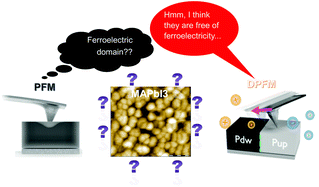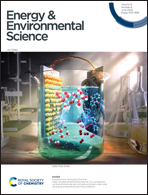Reply to the “Comment on the publication ‘Ferroelectricity-free lead halide perovskites’ by Gomez et al.” by Colsmann et al.†
Abstract
The existence of ferroelectricity in organic–inorganic perovskite thin films has been under debate over the past few years. If proven to exist, its magnitude in comparison to other known processes occurring in perovskite, such as electronic and ionic conductivities, will determine its importance for their optoelectronic properties. In a recent paper, our group aimed at contributing to the understanding of this topic by extending the range of measurements beyond what is conventionally carried out. In particular, we employed three techniques, namely, direct piezoelectric force microscopy, piezoelectric force microscopy, and electrostatic force microscopy, which we applied to two perovskite materials, prepared with control of film thickness and grain sizes that enabled the evaluation of morphological differences. Based on our experimental data, we concluded that lead halide perovskites are ferroelectricity-free.



 Please wait while we load your content...
Please wait while we load your content...